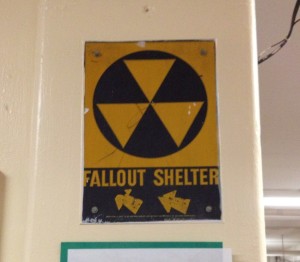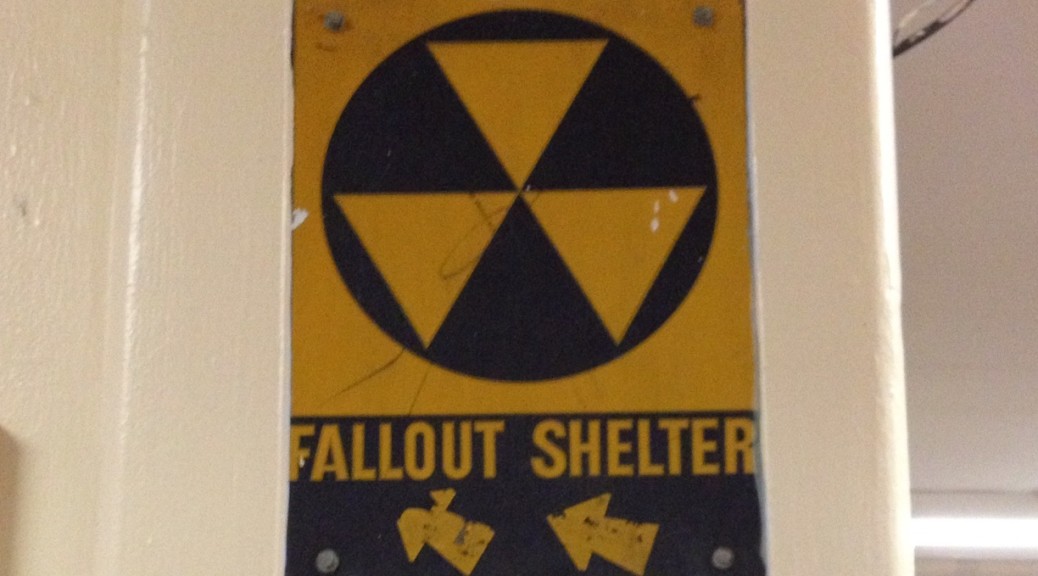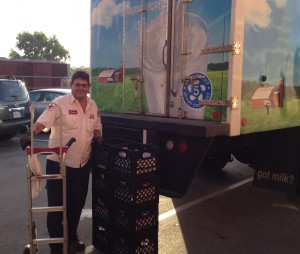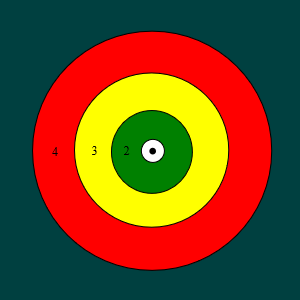On December 17, 2014 President Obama announced a prisoner exchange and the establishment of diplomatic relations with Cuba. While my students understood that it was a “big deal” I could tell that they didn’t fully understand it from a historical perspective. Then it hit me, they had no reason to. Unlike me they were not the children of Cuban immigrants that had fled Fidel Castro’s regime decades earlier. They didn’t grow up with a nuclear fallout shelter in their school or learning nuclear bomb drills from “Bert the Turtle” that were somehow simultaneously terrifying and comical. For your viewing entertainment:
I’m 34 years old and my Cold War memories are the fall of the Berlin Wall and the collapse of the Soviet Union. To make a movie analogy that would be like starting to watch “The Wizard of Oz” from the moment Dorothy throws the bucket of water at the witch. If I felt detached having lived through the tail end of it and having a strong family connection my current students, mostly born in 2000, have almost no concept of Cold War global politics.
Since I teach primarily ninth graders that have yet to take World or US History I often find myself making teaching points about historical events that they have never heard of. To make it easier to understand these concepts I’ve created “The Five Minute Ghetto Fabulous History Lesson” in which I teach them a topic that could be a year long college course as quickly as possible.
The following timeline is an intentionally brief overview of the Cold War with a few key notes and critical Human Geography references in bold.
- 1945 – The United States, the United Kingdom, and the Soviet Union work together to bring about the defeat of Nazi Germany and Imperial Japan.
- Despite being Allies the US and UK did not like or trust the Soviets, the feeling was mutual.
- The US, UK, France, and Soviet Union agree to divide Germany into 4 zones and do the same with Berlin.
- The Soviet Union begins to establish permanent dominance over Eastern Europe.
- Winston Churchill would later refer to this as the “Iron Curtain.”
- The US established itself as the dominant global power by using nuclear weapons to defeat Japan.
- 1948 – The Soviet Union closed off all access to Berlin hoping the US would give up on the city.
- The US and British kept the city from starving by flying in planes with supplies constantly.
- This was known as the Berlin Airlift.
- The US and British kept the city from starving by flying in planes with supplies constantly.
- 1949 – The Western European countries create a military alliance called the North Atlantic Treaty Organization (NATO).
- Their goal was to prevent the spread of Soviet Communism.
- 1949 – China’s Communist leaders declare victory and establish control over the entire country.
- The US supported Nationalist government fled to Taiwan, creating a hostile relationship that still exists to this day.
- The Western powers freaked out as the world’s largest population had gone “Red.”
- 1949 – The Soviet Union created and tested their own nuclear weapon.
- This started a nuclear arms race that would last until 1991.
- 1950 – Communist North Korea invades South Korea starting a war that would last 3 years and kill over a million people.
- The final outcome of the war was basically to pretend it had never happened.
- 1954 – The French are defeated in Vietnam paving the way for an independent and Communist government to be established.
- This would become highly complicated as eventually the US would try to prevent this from happening, and fail.
- 1955 – The Eastern European countries create their own military alliance under the guidance of the Soviet Union called the Warsaw Pact.
- This was an attempt by the Soviets to maintain balance of power with the western democracies.
- 1959 -Fidel Castro and his rebels overthrow the government of Cuba.
- While he had not declared himself a Communist aligned with the Soviet Union he would establish that relationship in the following years.
- In the last few years he has handed over control of the government to his brother Raul Castro. This is the same government that still rules over the island.
- 1961 – The US cuts diplomatic relations with Cuba.
- These are the same relations that would be reestablished last month by President Obama.
- 1961 – A CIA supported group of 1300 Cuban exiles attempt to invade Cuba and overthrow Fidel Castro’s government.
- Known as the Bay of Pigs Invasion.
- Failed miserably as they had expected US air support that never arrived and spies among them had alerted the Cuban military.
- 1961 – The Soviet Union builds a wall and creates a physical divide between West and Soviet dominated East Berlin.
- Their main objective had been to prevent people from escaping to West Berlin.
- 1962 – The Cuban Missile Crisis puts the US and Soviet Union on the brink of nuclear war.
- Surprisingly, the US did not like having Soviet nuclear missiles 90 miles off its shore.
- Nuclear war was only avoided because both sides realized, nobody wins a nuclear war.
- 1964 – President Lyndon B. Johnson gets Congress to pass the Gulf of Tonkin Resolution authorizing him to do anything he wants with the military in Vietnam.
- This was the start of what would become the longest war in US history. (Since surpassed by the war in Afghanistan)
- Over the course of the next 9 years 60,000 American soldiers and over a million Vietnamese would die in this war.
- 1972 – President Richard Nixon visits China in an attempt to begin normalizing diplomatic relations with them.
- Also seen as the start of establishing a trade relationship with China.
- 1972 – The US and Soviet Union begin the “Strategic Arms Limitation Talks” to discuss their nuclear arsenals.
- Over the next several years they would agree to limit nuclear missiles at current numbers and to eventually stop the production of new nuclear weapons.
- 1973 – The last US soldier was pulled out of Vietnam.
- While North and South Vietnam had agreed to a cease fire it was only a matter of time before they would start fighting again.
- 1975 – Saigon and the government of South Vietnam collapse.
- Twenty years after they defeated the French and two years after the US pulled out, Vietnam was united, independent, and under Communist rule.
- 1979 – The Soviet Union invades Afghanistan straining the progress that had been made in the previous decade to improve their relationship with the US.
- The US would later smuggle weapons to the rebels that would go on to defeat Soviet rule.
- 1985 – Mikhail Gorbachev becomes leader of the Soviet Union.
- He would become the individual that did the most to bring about the end of the Soviet Union and in turn, the Cold War.
- 1988 – The Soviet Union announced it would no longe interfere politically or militarily in Eastern Europe.
- In the next few months several Eastern European countries overthrew their communist governments.
- 1989 – The Berlin Wall is brought down.
- Opens the door for the reunification of East and West Germany the next year.
- 1991 – The Soviet Union’s government collapses.
- This would mark the official end of 46 years of hostility and nuclear threat between the US and Soviet Union.
Thankfully, the Cold War ended before anybody had to use one of these:







